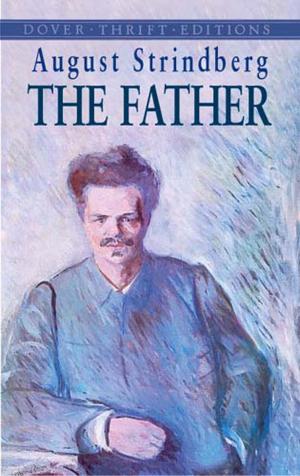The Piano Works of Claude Debussy
Nonfiction, Entertainment, Music, Music Styles, Classical & Opera, Classical| Author: | E. Robert Schmitz | ISBN: | 9780486172750 |
| Publisher: | Dover Publications | Publication: | May 5, 2014 |
| Imprint: | Dover Publications | Language: | English |
| Author: | E. Robert Schmitz |
| ISBN: | 9780486172750 |
| Publisher: | Dover Publications |
| Publication: | May 5, 2014 |
| Imprint: | Dover Publications |
| Language: | English |
This book is a firsthand report of a great composer's intentions in regard to the performance of his music. These intentions have been digested and interpreted for us by the composer's friend Robert Schmitz (1889–1949), who was himself a distinguished pianist, an articulate musician, and a well-known teacher. The product is an authoritative commentary on the entire body of Debussy's work for piano solo.
Written for both performers and listeners, the book's purpose is to increase enjoyment of and insight into these works. The book's shorter opening section comprises notes on many general aspects of the composer's life and work; a biographical sketch; a discussion of Debussy's place in relation to the concepts of impressionism and romanticism; his use of classical forms, tonality and modality, melody, counterpoint, etc. Section two, the heart of the book, examines in detail the whole of Debussy's music for solo piano, two hands. Seventy-one pieces in all are included: The Arabesques, the Suite Bergmasque, the Estampes, Images, Children's Corner, Préludes and Études. Each in its chronological place, the pieces are first described as a whole as to mood, source of programmatic inspiration, structure, tonality, and other characteristics. Then follows specific suggestions dealing with technical and expressive problems of particular measures and phrases.
The book is not meant as a substitute for Debussy's piano works; on the contrary, it will cause both listeners and performers to turn to this superb corpus of music with new interest and insight. "Complete, thorough, authoritative and important." — San Francisco Chronicle. "It is a thoughtful and mature reference book and though I am at variance with certain of its premises and conclusions, there is much to provoke the intelligent music lover and the inquiring musician." — Abram Chasins, The New York Times. "There is no doubt that he had closely identified himself with the great French composer, and his love and belief in the music shine through every page of this book." — H. C. Schonbert, The Saturday Review.
This book is a firsthand report of a great composer's intentions in regard to the performance of his music. These intentions have been digested and interpreted for us by the composer's friend Robert Schmitz (1889–1949), who was himself a distinguished pianist, an articulate musician, and a well-known teacher. The product is an authoritative commentary on the entire body of Debussy's work for piano solo.
Written for both performers and listeners, the book's purpose is to increase enjoyment of and insight into these works. The book's shorter opening section comprises notes on many general aspects of the composer's life and work; a biographical sketch; a discussion of Debussy's place in relation to the concepts of impressionism and romanticism; his use of classical forms, tonality and modality, melody, counterpoint, etc. Section two, the heart of the book, examines in detail the whole of Debussy's music for solo piano, two hands. Seventy-one pieces in all are included: The Arabesques, the Suite Bergmasque, the Estampes, Images, Children's Corner, Préludes and Études. Each in its chronological place, the pieces are first described as a whole as to mood, source of programmatic inspiration, structure, tonality, and other characteristics. Then follows specific suggestions dealing with technical and expressive problems of particular measures and phrases.
The book is not meant as a substitute for Debussy's piano works; on the contrary, it will cause both listeners and performers to turn to this superb corpus of music with new interest and insight. "Complete, thorough, authoritative and important." — San Francisco Chronicle. "It is a thoughtful and mature reference book and though I am at variance with certain of its premises and conclusions, there is much to provoke the intelligent music lover and the inquiring musician." — Abram Chasins, The New York Times. "There is no doubt that he had closely identified himself with the great French composer, and his love and belief in the music shine through every page of this book." — H. C. Schonbert, The Saturday Review.















